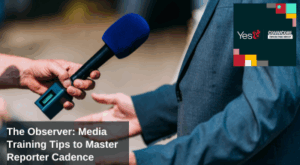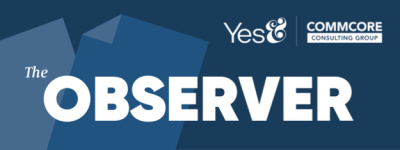 Journalists pride themselves – as they should – at being unpredictable during interviews. Where’s the fun if there are no curveballs heaved at you from time to time?! There is, though, a common process cadence that many reporters follow during the actual Q&A – particularly for print/online interviews that tend to run anywhere from 15 to 45 minutes. Prepared spokespeople are aware and can take advantage of key moments during the interview to score points.
Journalists pride themselves – as they should – at being unpredictable during interviews. Where’s the fun if there are no curveballs heaved at you from time to time?! There is, though, a common process cadence that many reporters follow during the actual Q&A – particularly for print/online interviews that tend to run anywhere from 15 to 45 minutes. Prepared spokespeople are aware and can take advantage of key moments during the interview to score points.
Your Next Media Interview: Know the Reporter’s Cadence and Jump on the Opportunities – Especially at the End!
The primacy-recency notion, in the case of a media interview, means that the reporter will often remember most of the first and last things you say. Knowing the reporter’s interview process cadence reveals other nuanced opportunities. That process is typically split up into three areas:- Do I think there’s something here?
- Time to confirm my research and elevate my knowledge on this subject matter!
- Do they understand the content well enough?
- Can they translate the technical parts into something palatable to the reader/listener?
- Are there examples and other illustrative ways to bring some life to this story?
- Is there enough context to frame out this piece?
- Soundbite Hunting
Why Media Training with Yes& CommCore?
Today’s media environment means soundbites go “viral,” hitting the digital press or social media almost instantaneously. Let CommCore train you on effective communication. Interactive exercises, meaningful discussion, and real-life examples allow our trainees to take on even the toughest scenarios. We provide 1-on-1 Executive Coaching, classroom-style media training for your entire team, and virtual options for when time is of the essence. For all media training and consultive services:- We conduct research into your organization
- We customize our sessions to your specific needs
- We utilize expert trainers who have relevant industry experience and know how to transfer their knowledge effectively
- Our advice is based on research and what works, not opinion
- Our Media Training is sought after by trusted names in the industry


